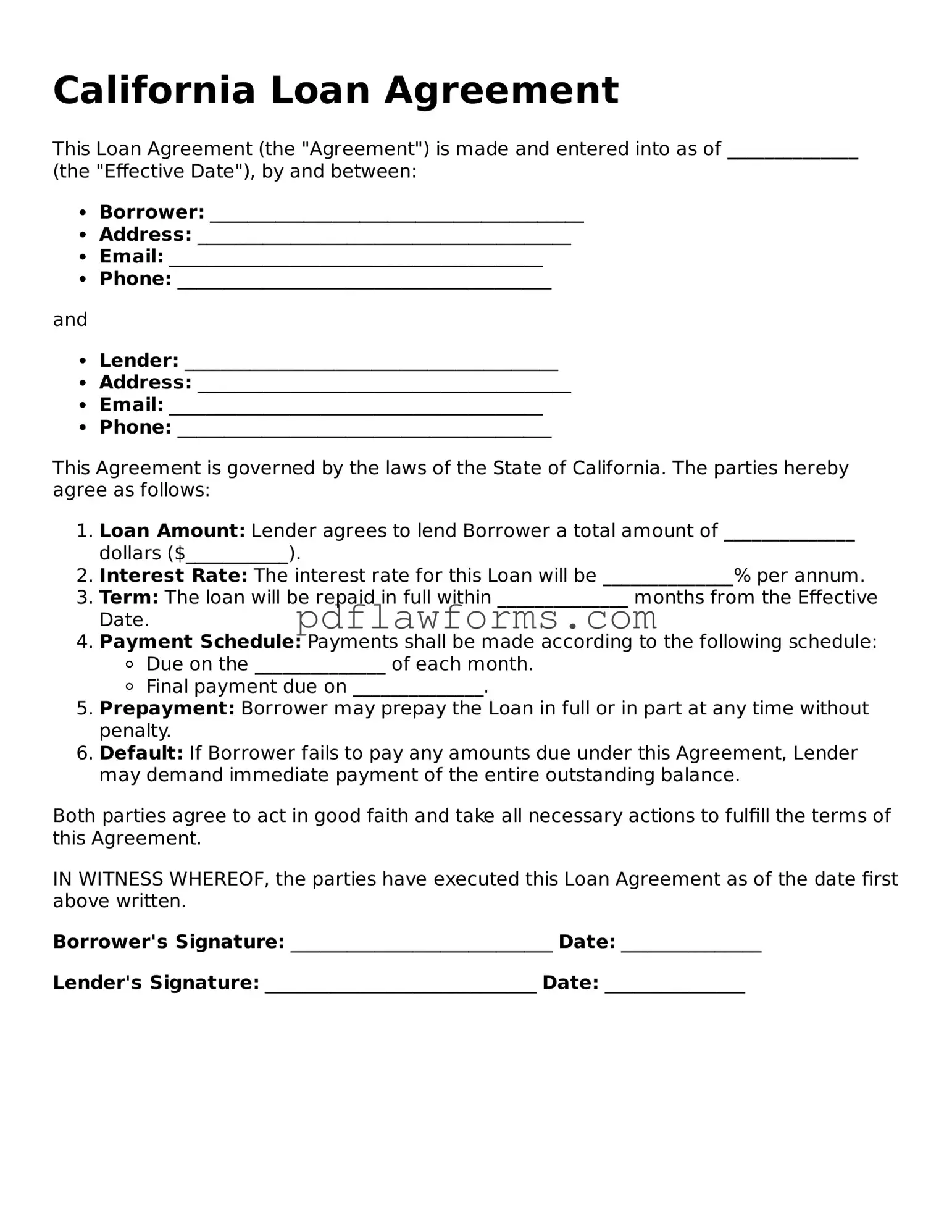When filling out the California Loan Agreement form, many individuals make common mistakes that can lead to complications later on. One frequent error is not providing accurate personal information. It is essential to double-check names, addresses, and contact details to ensure they are correct. Any discrepancies can cause delays or issues in processing the loan.
Another mistake is failing to read the terms and conditions carefully. Many people overlook important clauses that outline their responsibilities and rights. Understanding these terms is crucial to avoid misunderstandings and potential disputes down the line.
Some individuals neglect to include all necessary documentation when submitting the form. Required documents often include proof of income, identification, and credit history. Missing any of these can result in a rejection of the application or further delays.
Additionally, not specifying the loan amount clearly can lead to confusion. It is vital to state the exact amount being requested. Ambiguities can cause lenders to misinterpret the application, which may lead to unfavorable outcomes.
People sometimes make the mistake of not understanding the repayment terms. It is important to clarify the interest rate, payment schedule, and any fees associated with the loan. Misunderstanding these terms can create financial strain in the future.
Another common error is not signing the agreement where required. An unsigned document is not legally binding. Ensure that all parties involved have signed and dated the form before submission.
Some applicants also rush through the process, which can lead to careless mistakes. Taking the time to review the form thoroughly can prevent errors that may complicate the loan approval process.
Lastly, overlooking communication with the lender can be detrimental. Keeping an open line of communication ensures that any questions or concerns are addressed promptly. This proactive approach can help facilitate a smoother transaction.
